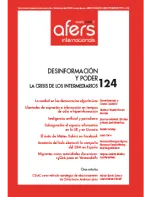An anatomy of the electoral hoax: political disinformation in Spain’s 2019 general election campaign

This paper analyses the content of the electoral hoaxes identified by factcheckers Maldita and Newtral, using as a case study the campaign for the April 28th 2019 Spanish general election. To study the context in which electoral disinformation operates, a bot was created on Twitter (@unfaking_es) that followed the activity of the accounts of the main media, political parties, candidates, official institutions and fact-checkers. Most of the 37 hoaxes analysed originated on social networks such as Twitter, Facebook and WhatsApp, and the electoral system itself was the main target of disinformation, being labelled as fraudulent. The debate on Twitter was dominated by live fact-checking carried out by left-wing media, with Pablo Casado (Popular Party) being the most frequently debunked candidate.
Keywords: fake news, disinformation, bots, election campaign, elections, political communication, Spain
DOI: doi.org/10.24241/rcai.2020.124.1.123
> The full text articles of this issue are available only in Spanish language
How to cite this article: Paniagua Rojano, Francisco; Seoane Pérez, Francisco y Magallón-Rosa, Raúl. «Anatomía del bulo electoral: la desinformación política durante la campaña del 28-A en España». Revista CIDOB d’Afers Internacionals, n.º 124 (abril de 2020), p. 123-145. DOI: doi.org/10.24241/rcai.2020.124.1.123
Authors: Francisco Paniagua Rojano, profesor titular de Periodismo, Universidad de Málaga; Francisco Seoane Pérez, profesor de Periodismo, Universidad Carlos III de Madrid and Raúl Magallón-Rosa, profesor de Periodismo, Universidad Carlos III de Madrid.